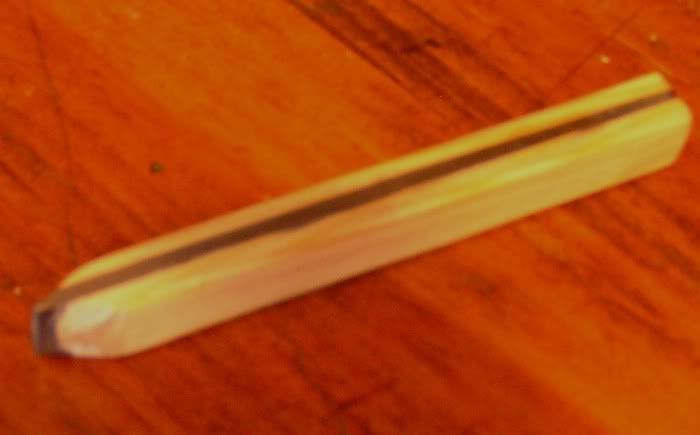About a year ago I started researching 18th century pencils.I had been asked by some school classes during a living history event and I did not have an answer.
Graphite was first discovered in England in 1565 and was called "greasy lead" because it resembled lead. In the late 18th century it was determined to a crystalline form of carbon and was named graphite.
By the late 1600's, pencil making had become a wide spread cottage industry and they were being shipped to world markets. Graphite was cut into thin sticks and glued between two pieces of soft wood. In 1761, Kasper Faber, cabinette maker, opened a factory in Germany to mass produce pencils.
See this site for info:http://www.faber-castell.de/20873/History-Information/History-of-the-Pencil/Pencil-Discovery-Innovation/default_news.aspx
Here is a pic of my rendition.

It is 4"long and about 1/2" sq.
Thanks for looking,
Mike
Graphite was first discovered in England in 1565 and was called "greasy lead" because it resembled lead. In the late 18th century it was determined to a crystalline form of carbon and was named graphite.
By the late 1600's, pencil making had become a wide spread cottage industry and they were being shipped to world markets. Graphite was cut into thin sticks and glued between two pieces of soft wood. In 1761, Kasper Faber, cabinette maker, opened a factory in Germany to mass produce pencils.
See this site for info:http://www.faber-castell.de/20873/History-Information/History-of-the-Pencil/Pencil-Discovery-Innovation/default_news.aspx
Here is a pic of my rendition.

It is 4"long and about 1/2" sq.
Thanks for looking,
Mike





